Bold strategies blaze a trail:From embracing new technologies to taking steps to minimize regulatory burdens, northern and western banks find ways to make their own destinies.
Among banks in Western Europe and Nordic countries, Netherlands-based ING leads the way. In combining a customer-centric approach with well-thought-out applications of new technologies, it achieves outcomes that benefit both customers and shareholders. Add to that the concrete steps it has taken to promote a more sustainable, low-carbon economy, and ING again deserves distinction as our regional winner.
“Innovation is changing banking at lightning speed,” says CEO Ralph Hamers; and ING has embraced such changes as blockchain, with its potential to make banking simpler, safer, faster and more competitively priced. “Blockchain is a priority for ING, [which has been] creating blockchain code that’s nearly 10 times more efficient in ensuring privacy, and using blockchain to create digital platforms for agricultural and energy commodity trades—the latter through a venture with other partners.”
Hamers sees combining in-house innovation with strategic partnerships as the best way to improve customer experience. In the Netherlands, the bank launched a digital tool for small-business customers that links receipts and bills directly to transactions, giving customers one platform for their administration and banking. Another partnership was cemented by ING’s new 75% stake in Payvision, a leading payments-service provider.
During 2017, the bank grew its global customer base to 37.4 million and ranked highest in recent net promoter scores among customers in nine of the 13 retail markets where it is active. While ongoing investment in technology pushed up the group’s cost-to-income ratio, ING’s full-year underlying pretax result rose 2.4% to nearly €7.2 billion ($8.6 billion); and the full-year underlying return on equity was 10.2% on the back of an increase of €26.9 billion in net core lending, resilient margins and a €19 billion net increase in customer deposits.
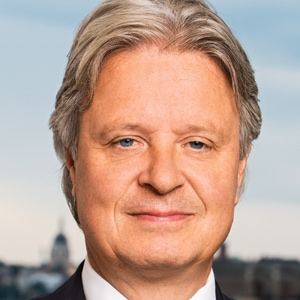
Casper von Koskull, Nordea CEO |
Scandinavian banks scarcely lag behind in the race toward digitization, greater operational simplification and more-precise market segmentation. Nordea Bank, already the most pan-Scandinavian bank, pushed ahead with integration of operations in its four main markets as part of its One Bank initiative, while at the same time proposing a change of corporate domicile from Sweden to Finland. As a result, the group would join the eurozone and be subject to European Central Bank regulations, which are financially less onerous than those prevailing in Sweden.
“A new legal structure and change of domicile will enable us to operate as one bank in a more stable and predictable regulatory environment,” says CEO Casper von Koskull, further noting that “in 2017, we saw for the first time synchronized growth in all our Nordic home markets.”
Nordea is this year’s winner in Denmark, where it maintained or grew market share across key segments and, in a negative-interest environment, reported operational profits only fractionally down from the previous year. Cost-to-income ratios improved, with more to come as investments in technology feed through. Wealth management performed strongly, with Nordea rated best on performance among the largest Danish fund companies.
Nordea was also our winner in Norway, having raised its operating profits from personal banking by almost one third to €247 million. Net interest income improved significantly over the year, costs were cut—and while lending volumes were trimmed marginally, customers’ deposits grew. Von Koskull notes, however, that “the planned derisking of the bank, with reduced exposure to Russia, shipping, offshore and oil services—particularly prominent in Norway—also reduced income levels.”
Nordea has taken the approach of paying up front for long-term benefits.
“After years of intense investment, things are happening now, and we are entering the next stage of our transformation journey,” von Koskull says. “We have built up our capabilities within compliance and risk-management functions. Our digital investments result in an increased roll-out frequency of improved products and services to our customers. The core banking platform replacement is proceeding in line with the budget and will lead to lower operational risks and improved customer satisfaction. Costs are being reduced as part of improved cost-efficiency structures throughout the organization.”
Country Winners
Our winner in Sweden, Swedbank, turned in an impressive performance during 2017. Profits rose by 16% on higher net interest and commission income. While there was a sharp correction late in the year in what many saw as an overheated housing market, the bank’s mortgage book continued to grow. Swedbank sees the country’s strong economy, labor market and household finances making the adjustment manageable.
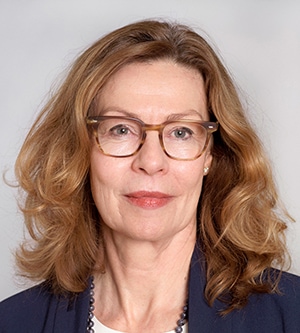
Birgitte Bonnesen, Swedbank CEO |
Costs rose marginally because, as CEO Birgitte Bonnesen points out in the bank’s year-end report, “To be more competitive and increase customer value, we have decided to accelerate the pace of investment and devote more resources to digitization and automation of daily banking services.”
To this end, Swedbank has acquired payment-service provider PayEx and is now integrating the platform to provide an enhanced ecommerce offering. Meantime, cooperation with fintech company Mina Tjanster has resulted in a new app for private customers to better manage their subscriptions.
“Our virtual assistant Nina and robots will be further developed so that they can be used more broadly in our operations,” Bonnesen says, “with the aim of further improving process efficiencies and increasing customer value.”
Nordea’s relocation to Finland may well quadruple the size of the country’s banking sector relative to the economy. But Nordea faces tough competition in domestic markets there from this year’s winner, the home-grown OP Financial Group, which encompasses banking, wealth management, insurance and healthcare, and is now integrating these offerings through new packages such as OP Home, a platform for housing-related services.
OP had another good year, with pretax earnings up 16% as overall income rose 6.8% thanks to higher returns from net interest and commissions combined with cost efficiencies. Chairman Tony Vepsäläinen points to investment in regulatory compliance, large-scale systems upgrades, redesign of the op.fi service and the launch of new versatile payment solutions. The bank’s loan and deposit portfolios increased by 4.6% and 5.8% respectively, loan losses fell and its capital buffers remained strong with the CET 1 ratio standing at 20.1%.
Iceland is geographically an outlier, and its small population does not allow any of its domestic banks to make major investments in technology. Nonetheless, market leader Landsbankinn, our winner, continued strengthening its IT capabilities, introducing new deposit and payment systems and measures to reduce operational risk.
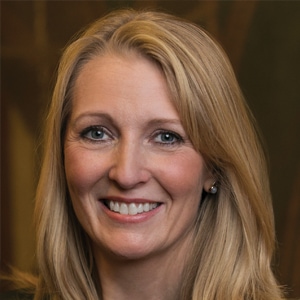
Lilja Björk Einarsdóttir, Landsbankinn CEO |
“Landsbankinn will place increased emphasis on digital banking solutions that improve the bank’s services even further, making them more efficient and accessible to customers,” says CEO Lilja Björk Einarsdóttir.
During 2017, both market share and customer satisfaction improved, and profits rose sharply from 16.6 billion to 19.8 billion Icelandic kronur ($160.4 to $191.3 million) as the bank shaved more than 2% off its cost/income ratio.
The Benelux countries have become an important hub for developing creative applications of technology in finance; and this year’s winner in Belgium, BNP Paribas Fortis, has had great success, with its Easy Banking app usage increased by 49% to 1.3 million users. Moving forward, the bank is partnering with Swedish fintech Tink to integrate aggregation, personal-finance management and payment initiation.
“We strongly believe that technology and changing legislation, such as PSD2, offer exciting opportunities for banks and their clients,” says CEO Max Jadot. “Working closely with successful fintechs and integrating them into our ecosystem is part of the DNA of our bank.”
In 2017, the bank turned in a strong financial performance, with good growth in mortgages and corporate loans, and with buoyant fee income offsetting thin net-interest margins. The result was a 10.3% hike in pretax income to just over €1 billion.
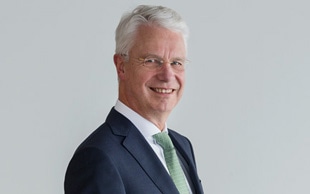
Kees van Dijkhuizen, ABN Amro |
Nor are the Dutch banks slouches when it comes to pioneering technology; and Kees van Dijkhuizen, CEO of ABN Amro, our winner in the Netherlands, is proud of its “commitment to innovation and sustainability.” The bank was among the first in continental Europe to introduce instant international payments. Other firsts include offering digital mortgages within 24 hours; launching fully digital lender New10, which enables credit decisions on business loans up to €1 million within 15 minutes; and also launching Franx, a single digital platform with transparent pricing for business clients who want to arrange their own international payments online and hedge currency risks digitally.On sustainability, ABN Amro is moving to upgrade the energy efficiency of commercial buildings and homes in its real estate folio.
Full-year profits rose to nearly €2.8 billion, and return on equity increased from 11.8% to 14.5%. The cost/income ratio improved by 6%, with further gains expected as IT drives cost savings through.
Our winner in Germany, Commerzbank, has built up an enviable relationship with the thousands of Mittelstand (mid-size) companies, the combined strength of which helped the bank’s revenues increase to €8.6 billion after exceptional items are excluded.
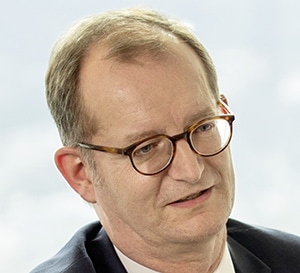
Martin Zielke, Commerzbank |
“We see the structural change in the German banking sector as an opportunity and intend to be among the winners of this change,” says CEO Martin Zielke. “That’s why we are radically transforming the bank. We have advanced the digitization of the bank and have grown strongly.”
But restructuring costs and loan loss provisions reduced the bank’s profitability, so operating profits fell slightly to €0.3 billion, though it looks like Commerzbank has turned the corner.
Anas Abuzaakouk, CEO of our winner in Austria, BAWAG Group, says in a press release, “2017 was a remarkable year for our company.” He adds, “We executed the largest IPO in Austria’s history, completed multiple acquisitions and integrations, and continued to execute on our day-to-day operational and strategic initiatives, all while delivering another year of record performance. We delivered €517 million of profit before tax and generated 330 basis points of gross capital, while fully funding two acquisitions, making dividend payments and making significant investments allowing us to continue our transformation.”
Profitability was up 12% on the back of stronger net interest and fee income, while return on equity increased by nearly 18%. Aware of changing customer needs in a constantly evolving banking landscape, Abuzaakouk adds: “We continue to see a significant move toward digital platforms, more demand for qualitative sales advisory, and the many opportunities brought by new technologies.”
During 2017, the French economy finally picked up; and our winner, Groupe BPCE, lifted its pretax income by 4.1%. The year also saw strong performances from Natixis, its asset management and corporate finance arm, which grew revenues by 14.5%. Corporate and investment banking were 7.3% better. Retail banking increased new loans by record-breaking levels, though in a low-interest-rate environment margins were squeezed.

François Pérol, Groupe BPCE CEO |
“The results confirm the resilience of our universal banking model,” says Natixis chairman François Pérol in announcing the company’s 2017 report, adding that “insurance and payments activities have continued to enjoy strong growth and are confirming their role as true growth drivers for our retail banking and insurance business lines.”
BPCE continues to invest in its acquisition of Compte-Nickel and its 800,000 accounts to complement Hello Bank! and the bank’s own integrated digital offering. Pérol notes that “the group’s balance sheet has been further reinforced, with high levels of both capital adequacy and total loss-absorbing capacity.”
For Italy’s banks, 2017 saw some much-needed injections of new capital and the state-backed rescue of debt-laden regional players. In the process our winner, Intesa Sanpaolo, took over the assets of two Veneto-region banks. The most highly rated and profitable bank in Italy grew its income by 14% on the back of strong commissions and net inflows of assets under management, up 61% over the previous year. This, combined with effective cost cutting and management of nonperforming loans, fed through to a 23% jump in net income. CEO Carlo Messina plans to accelerate cleaning out the bank’s bad loans by selling off part of the portfolio and to further strengthen its capital buffers.
The Cataloniaindependence vote obliged our winner in Spain, CaixaBank, to move its legal domicile outside the region, though Barcelona remains its operational center. Politics, though, did not prevent the bank from increasing its leading position in the Spanish retail market, especially in online and mobile banking, where it has the highest number of users. New strategic partnerships include the Barcelona-based Payment Innovation Hub, which promotes joint development of innovative payment solutions and purchase experiences, such as the iupay digital wallet and Samsung Pay.
The bank is also partnering with the Barcelona Supercomputing Center on advanced deep-learning systems with applications for financial innovation; while its imaginBank is Spain’s first mobile-only bank, providing services exclusively though mobile apps and social networks. Double-digit increases in both net interest and fee and commission income fueled a 44% increase in the domestic bank’s profit to above €1.5 billion; while the group as a whole had its best year ever with a 61% boost to nearly €1.7 billion and a return on equity of 8.4%, up 280 basis points over the year.
With Portugal’s economy improving, Santander Totta, its most profitable and highly rated bank, turned in another sparkling performance with a 10.3% surge in net income to €436.6 million. CEO António Vieira Monteiro says, “The improvement and quality of the results is due to organic growth, a decrease of 7.6% in costs and 63% on impairments.” The bank’s digital transformation accelerated though the launch of products and services such as ebroker and CrediSimples, an app-based immediate-credit facility. Market share was gained in mortgage and SME loans, and the bank’s 11.8% return on equity is way ahead of its peers.
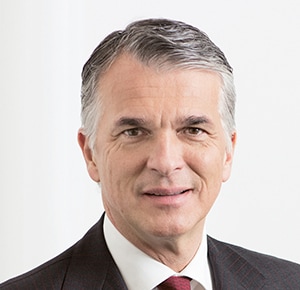
Sergio Ermotti, UBS CEO |
Across Europe’s many low-tax jurisdictions, it is usually asset and wealth management rather than retail banking driving revenue growth. Such was the case with our winner in Switzerland, UBS, which posted an adjusted pretax income of SFr5.4 billion ($5.5 billion), up nearly 32% on the previous year. Retail and corporate banking income came in 4% better despite low or negative interest rates in Switzerland and the eurozone.
“We delivered stronger financial results and met our net cost reduction target,” comments CEO Sergio P. Ermotti. “Greater regulatory clarity means we can open a new chapter for UBS, allowing us to sharpen our focus on growth across our businesses, make further investments in technology and deliver attractive returns to shareholders.”
Our winner in Luxembourg is again Banque Internationale a Luxembourg (BIL), which in 2017 grew its business across all fronts, expanding its lending by nearly 11%, attracting more deposits and increasing assets under management by 4.5% to just short of €40 billion. With core pretax profit up by 9.3%, CEO Hugues Delcourt says he is “proud that we once again met financial targets,” and that BIL “has truly regained its place as a strong and growing universal bank that is firmly rooted in the local economy.”
By far the most local of the many banks with a presence in Monaco, CFM Indosuez Wealth can also access its parent, Credit Agricole’s global network. While it provides full banking services to Monaco residents and businesses through its seven branches, CFM’s revenues derive principally from wealth management and advisory services to ultrahigh-net-worth individuals and offshore companies. The same is true of banks in Andorra, where this year’s winner, MoraBanc, managed nearly €6.8 billion of assets while maintaining exceptionally strong capital buffers and pushing through an array of digital innovations.
Liechtensteinische Landesbank, our winner again in the principality, boosted its annual profit by 7.1% to SFr111 million, launched new fee-earning products, and made bolt-on acquisitions in its core markets of Switzerland and Austria.
“We have succeeded in increasing our profit for the fourth time in succession,” says chairman Georg Wohlwend, adding that “our focused business model and the systematic implementation of our strategy are having a sustained impact.”
Bank of Valletta is our winner in Malta, having reinforced its capital base through a record-breaking rights issue and increased pretax profits to nearly €144 million, a 21.5% improvement on a comparable basis. Customer deposits rose to a new high of over €10 billion, but prevailing low interest rates squeezed lending margins. Chairman Deo Scerri says that “over the past years, the bank took some tough decisions and is investing heavily in its people and IT systems in order to ensure it remains valid, competitive and sustainable over the long term.”
Cyprus’s banking crisis is still being resolved, and country-winner Hellenic Bank took important decisions to hasten a return to normalcy. It agreed to the first portfolio sale of nonperforming loans, underwent a major internal reorganization that will improve efficiencies, and cut staff numbers and ongoing costs through a voluntary early exit scheme. These costs combined with higher provisions to turn an underlying profit of €36 million to a post-tax loss of €45 million. CEO Yannis Matsis called it a “landmark year,” which saw “the bank strengthening through the continuous resolution of nonperforming exposures and growing the bank’s franchise.”
Our winner in Greece, Eurobank Ergasias, leads its peers in both profitability and rebuilding of its balance sheet. Core income rose by 5.4% before provisions, while net profits were €186 million excluding exceptional items. Nonperforming exposures [NPE] were reduced ahead of target and the bank’s capital buffers strengthened. With Greece’s economy finally recovering, CEO Fokion Karavias says, “Eurobank is well on track to achieve planned NPE reduction, maintain profitability, continue the creation of organic capital and strengthen our position in the Greek market and abroad.”
The collapse of Ireland’s property market and banks during the financial crisis looked as severe as Greece’s. But Irish house prices are now back above their 2007 peak; and our winner, Bank of Ireland, has restored dividend payments. Newly independent following the sale of the government’s 29% stake last year, it saw its underlying profit marginally down at just over €1 billion as interest margins were squeezed. Still, loan-impairment charges were much lower and capital buffers strengthened.
“In Ireland, we have grown our market share in residential mortgages and have the largest share in the business-banking sector,” says new CEO Francesca McDonagh. “We materially improved our asset quality, reducing levels of nonperforming exposures by a further 31%.”
Last, but very far from least, is Lloyds Bank, again our winner in the United Kingdom. During 2017, it returned to full private ownership, opening the way to progressive dividends and a share buyback of up to £1 billion ($1.4 billion). That is made possible by the leading position Lloyds holds in most UK retail and business segments, as well as its operational efficiency, with a cost-to-income ratio of 46.8%. Continuing to build on its existing digital capabilities—in both streamlining internal processes and creating effective delivery and customer-service channels—it has invested £3 billion to ensure it remains the UK’s leading digital bank.
For 2017, the bank’s pretax profit rose by 24% to £5.3 billion on the back of cost savings, growth in lending into targeted segments—including SMEs and new mortgages—and improving net interest margins. Strong capital generation raised the bank’s CET1 ratio by 245 basis points to 15.5%. In the company’s announcement of its 2017 results, CEO António Horta-Osório commented, “We have delivered another year of strong financial performance with improved profit and returns … and have now built the largest and top-rated digital bank in the UK. We are therefore well prepared to succeed in a digital world.”
Best Banks In Western Europe 2018
Regional Winner – ING
| Country | Bank |
|---|---|
| Andorra |
Mora Banc |
| Austria |
BAWAG Group |
| Belgium |
BNP Paribas |
| Cyprus |
Hellenic Bank |
| Denmark |
Nordea Bank |
| Finland |
OP Financial Group |
| France |
BPCE |
| Germany |
Commerzbank |
| Greece |
Eurobank Ergasias |
| Iceland |
Landsbankinn |
| Ireland |
Bank of Ireland |
| Italy |
Intesa Sanpaolo |
| Liechtenstein |
Liechtensteinische Landesbank |
| Luxembourg |
Banque Internationale a Luxembourg |
| Malta |
Bank of Valletta |
| Monaco |
CFM Indosuez Wealth |
| Netherlands |
ABN Amro Bank |
| Norway |
Nordea Bank |
| Portugal |
Banco Santander Totta |
| Spain |
CaixaBank |
| Sweden |
Swedbank |
| Switzerland |
UBS |
| UK |
Lloyds Bank |



